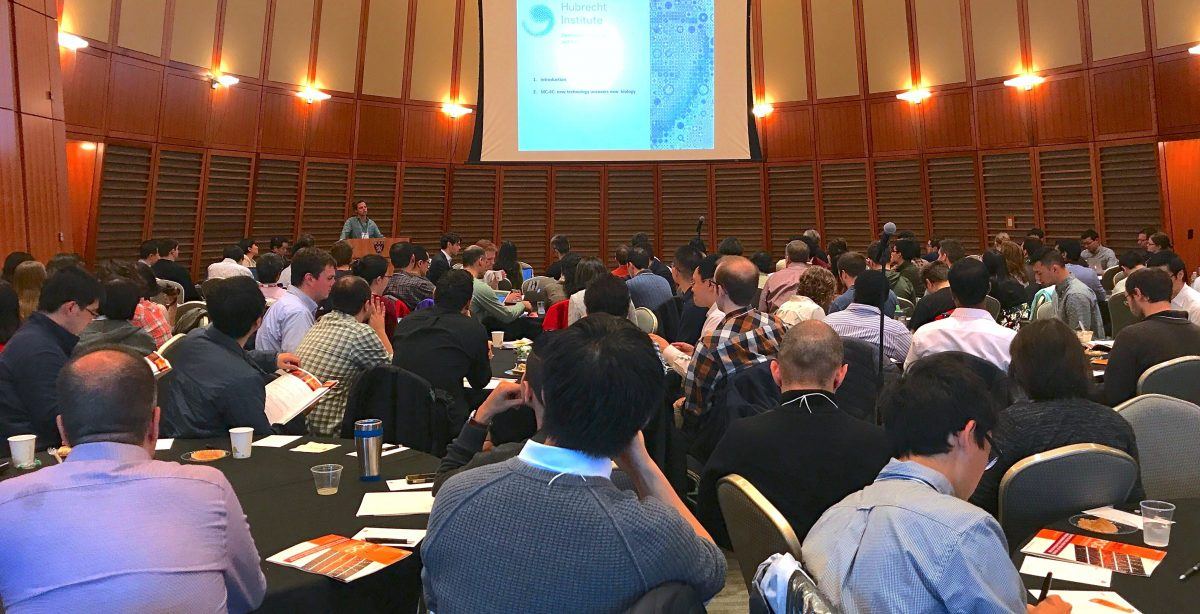How is the ~2-meter-long human genome folded into a ~6 micrometer cell nucleus? How do the three-dimensional contacts between loci that are distant in the linear genome impact gene regulation? What are the latest techniques for measures such interactions and what are the associated challenges in data analysis? These are the main questions discussed in this year’s conference Quantitative Analysis of Higher-Order Chromatin Interactions, sponsored by the Program in Quantitative Genomics.
This conference, which took place in the Joseph B. Martin Conference Center from Nov 2-3, featured twelve leaders in the field, including several who have developed state-of-the-art techniques for profiling three-dimensional contacts in the genome. These techniques take advantage of the advances in high-throughput DNA sequencing as well as super-resolution microscopy, and have already demonstrated that the standard textbook description of folded structure is incorrect.
The topics of the talks ranged from new techniques for detecting interactions of multiple loci, high-throughput identification DNA fragments by multiplex labeling in situ (in their native context), biophysical simulation of how looping structures are formed, the latest in the development of algorithms for identifying loops and domains from contact maps, and visualization of large data sets (a 3D contact map with 1-kb resolution is represented by a 3 million by 3 million matrix, which is, thankfully, sparse). Nearly 70 abstracts were submitted, and 12 were chosen as stellar abstracts, with the best 3 presented as platform talks. The conference, which was over-subscribed past the room capacity, was a definitely a success. Thank you to all who participated!




